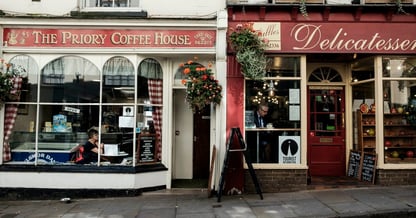
Why Slow Retail WiFi is Leaving Money on the Table | WiFi SPARK
WiFi changed the face of many industries, including the retail sector. Despite this, some businesses believe providing free WiFi isn’t worth the expense and...
Read more
4 minute read | 14/05/2020

The Business Improvement Districts (BIDs) in the UK have the responsibility of implementing projects that will benefit the local area. Using combined levy income, they ensure local businesses, residents and visitors can benefit from the enhancements.
It can be complex, take up to two years and require a range of skills and resources to be successful.After all the hard work scoping, consulting, assessing feasibility and developing the strategy, you’ll need to communicate this to the relevant parties. Here’s our blog on how to write a BID Proposal for your local town, city or district and why WiFi should be a consideration.
This is a checklist of commonly agreed best practice for writing a BID proposal.
Some BID Proposals are published in two parts – a short, digestible marketing document and a more comprehensive technical document. While the first will be published in hard copy and distributed to all BID-eligible businesses, the second will live on the BID website.
The Proposal documents need to be sent to the local authority for approval before they can be published. The submission to the authority should also include:
Your BID proposal should ultimately work to invest money where needed to make improvements to the local business environment. A key consideration should be the evolving shopping habits we see coming into play, high streets need to explore innovations to keep up.
To achieve this, we think BIDs should aim to build on their areas of strengths and offer a viable and exciting alternative to not just internet shopping, but out-of-town too.
We think that WiFi needs to be a consideration in all BID proposals. It can be a key benefit for both visitors to the town and businesses. For visitors, it can enable them to see information and promotions from local businesses. For BID teams and town planners, there are unbeatable insights and analytics available by having a good WiFi solution in a town.
An example of this is Falmouth, a town who wanted to consolidate their position as a popular destination for visitors by investing in a public WiFi network. The Falmouth BID and Falmouth Town Council united to find a solution that would be able to support high usage during peak visitor periods.
After rolling out a robust and high-speed network, Falmouth is now enjoying the benefits of increased dwell time from visitors which has, in turn, helped local businesses. It’s been so successful that the Falmouth Town Council are considering further expansion of the network. You can read more about this case study by clicking the link below.
Whether you’re looking to innovate your local area with a WiFi network or simply want to spruce up the landscape, BIDs will face less resistance from stakeholders, businesses and the local community if they’re transparent about what they want to achieve. Not every email chain needs to be public but there are simple steps BIDs can do to improve visibility and buy-in.
One of the most effective ways for BIDs to be more open is to operate an active social media presence. You can learn more about the best practices for BIDs in this blog.
Once the BID Proposal is in place and the local authority has approved it, the ballot campaigning begins. Developing the right material for the campaign period is vital. The key piece of collateral is, of course, the marketing version of the BID Proposal that’s more digestible.
Whether your BID Proposal is looking to revamp your town using innovative WiFi solutions or attract tourists with free parking - we can stabilise the high street together.
Many high streets in the UK have already incentivised their town through a triumphant BID Proposal. Using innovative technology to increase insights, custom and footfall, they’ve established themselves as innovators in retail.
That’s why we’ve created our ‘Transform Your Town’ guide which details how businesses and shoppers can benefit from some rejuvenation. From towns that are already thriving to how to secure your place on the high street after the COVID-19 dust settles, get access by downloading the guide below.
Rebecca is the Marketing Director. She's worked for SPARK TSL since 2012. She is responsible for high level marketing strategy focusing on lead generation and aiding the vision of the business; to ensure that no patient has to pay for entertainment.
More articles by the author

WiFi changed the face of many industries, including the retail sector. Despite this, some businesses believe providing free WiFi isn’t worth the expense and...
Read more

A Business Improvement District (BID) empowers local businesses to improve the area in which they trade and fund local projects and campaigns. They’ve become...
Read more

Whether it’s in the pub or on a train, the modern-day user expects free WiFi wherever they go. Events and conferences are no different. In fact, your attendees...
Read more